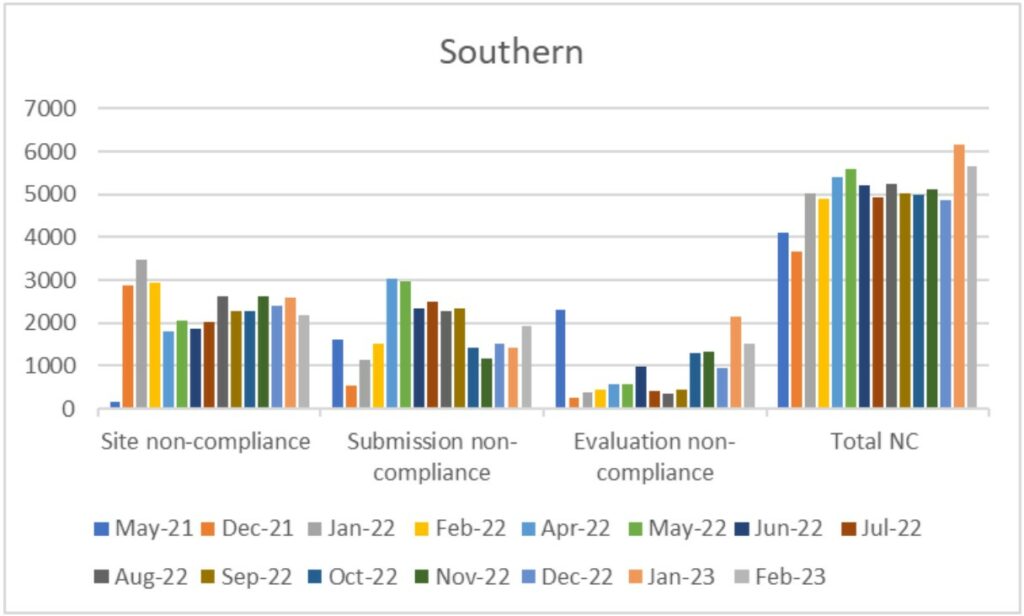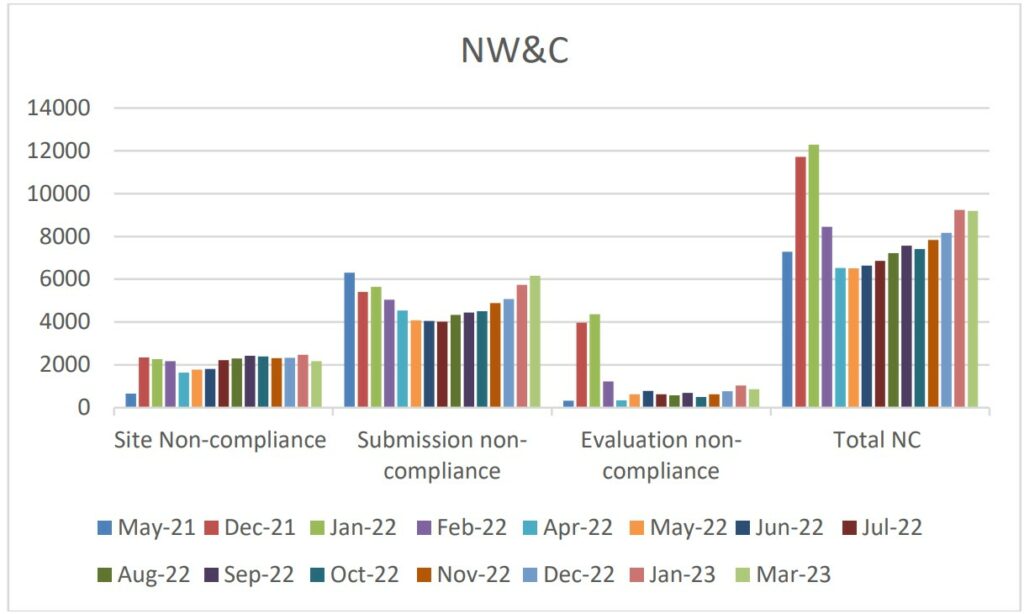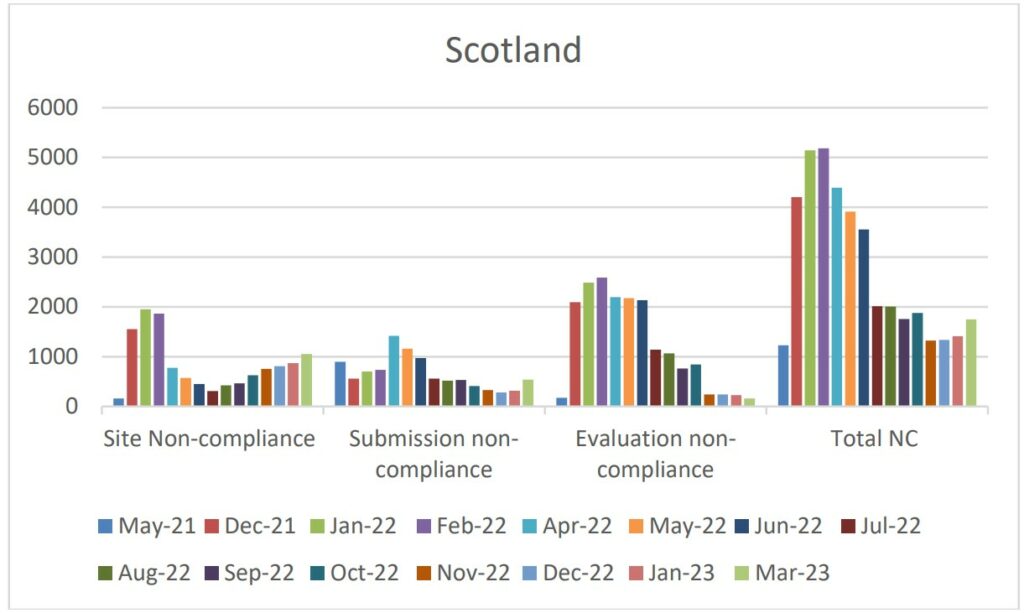Colin Wheeler
An open letter from John Larkinson, the chief executive of the Office of Rail and Road (ORR), to Andrew Haines, chief executive of Network Rail, dated 15 May this year is headed with the worrying statement that Network Rail has made only “limited progress on eliminating non-compliance with structures examinations.”
John Larkinson refers to there being over 70,000 structures on the railway network and accepts that the ORR understands the scale of the job of inspecting and examining them all. Its publication, I understand, reflects the growing and understandable safety concerns of the ORR.
The letter says that Network Rail must comply with the terms of its Network Management Duty in respect of their maintenance of the rail network. The standard for examinations was modified for September of this year and is claimed to “support a more risk-based approach examination regime, changes to visual examination intervals and examination delivery by line of route.”
The letter confirms the ORR requirement that Network Rail must “eliminate its non-compliance with the examination process at the required intervals.”
On reading the letter, it becomes evident that the ORR recognises that failing to carry out examinations can result in the development of undetected faults leading to safety incidents and the imposition of speed restrictions or worse. I note the use of the word eliminate rather than reduce; elimination, and quickly, is imperative. It also highlights the importance of comprehensive assessment of faults found by examiners, adding that these can lead to a safety incident or speed restrictions.


Concern since 2021
It is unusual for concerns to be set out in detail in an open letter. The comment by the ORR that “we started escalating our concerns about non-compliance in 2021, but progress has not been good enough, and in some cases compliance rates have deteriorated,” is clear and direct. The letter details two specific concerns:
First that “Network Rail does not have robust plans in place across the regions to achieve a reasonable level of compliance with the new standard and reduce the backlog of examinations.”
And second that “Regions are making insufficient progress to implement the use of available technology (for example drones and solar scour monitoring technology) to reduce the backlog of inspections.”
The concerns of the ORR can be seen in more detail by examining graphs for March of this year showing a breakdown into four non-compliance areas and by region. The four areas are:
- Number of examinations on site not completed within site tolerance time.
- Examination completed on site but report not yet submitted.
- Examination report submitted but not yet evaluated.
- Total of non-compliances being the sum of all three on compliances.
Size of the backlog
There are significant differences between the regions. In round figures, the graphs indicate total non-compliance backlogs as: Southern 5,500; Eastern 5,500; North West and Central 9,250; Wales and West 1,300; and Scotland 1,800.
I endorse and applaud the action taken by the ORR to date.
The quality of the reports and competence of those carrying out the examinations, the qualified engineers who sign off reports, as well as those who decide and take responsibility for necessary repairs and renewals, are of particular interest to me.
I have read with dismay reports following accidents and incidents involving identified both track and structural defects, where unnamed head office decision makers have delayed or even cancelled repairs and renewals. Local infrastructure maintenance engineers appear to lose ownership, if not influence and accountability, when identified renewals and repairs are delayed by head offices.
At the end of June, the ORR was due to comment on the initial plan and Network Rail was, by the end of August, to produce its final plan. Subsequently, Network Rail will be required to provided regular progress updates on their progress to the ORR.


Go to Jail card
During my employment with British Rail, I recall the introduction of safety responsibility statements to comply with the Health and Safety at Work legislation. There were occasions when it became necessary for speed restrictions and even line closures to be imposed. As the responsible engineer, I held a ‘Go to Jail’ card. If I was overruled and proposed work was delayed or changed, a more senior engineer became responsible. Examiners, who were mostly trained and time-served tradesmen carried out their work and, as the responsible engineer, I checked, noted any concerns, and took appropriate action when repairs were needed.
As a divisional civil engineer with assistant engineers specialising in both track and structures, we had the authority to lift restrictions imposed by our people but in doing so took responsibility for the safety of the railway. My engineering decisions could only be challenged by a more senior qualified engineer from the regional organisation or board level who could then be held personally responsible. This could and did lead to conflict with our operating colleagues.
I also recall cold, wet shifts when I inspected tunnels and tunnel shafts in finger-tip examinations on the coldest of winter nights. Invariably we found new developing problems on every detailed inspection. I also have memories of random sample audit checks I made to assure myself of the accuracy and detail of reports of examiner’s inspections and the discovery of areas marked as “not examined”, and even of failing buried structures of which there was no record.
As progress is made to catch up with the backlog, I suggest it is imperative that the fitness for purpose of the suitably qualified inspectors and professional engineers, and the contracts under which they are working is clarified and, where necessary, improved. Personal as well as organisational competences and liabilities of those doing the inspections and drafting reports should always be independently scrutinised.

Reports need to be checked and signed by individuals whose qualifications, experience, and job descriptions make clear their competences, liabilities, and accountabilities. When repairs or renewals are delayed, those engineers who make the decisions should also assume responsibility for the continued use, imposition of restrictions, or closure of the structure or track.
I also remember how carefully decisions were made to increase the frequency or scope of examinations when a structure was beginning to fail to the extent that it could soon become necessary for it to be propped, axle weight or speed restricted, or even taken out of service at short notice. I recommend that the ORR consider carrying out their own checks of Network Rail examination reports by conducting their own examinations. A degree of assurance of structural safety or an indication that more needs to be done should be the result.
Image credit:

